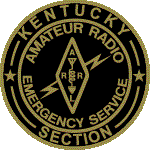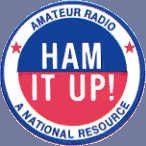|
Home
Amateur Exams
Commercial Exams
BVE Group
Links
Repeater Info
RF Safety
RADIATION PROBE
Skywarn Info
Title IV-Spam
UK Wildcat Page
About KN4S
Session Info



| |
K4KJQ
REPEATER DO'S AND DON'TS
12/1/97 by Ron Ritchie/N4MOM,
and Paul Mitchell/N4DUE
DO:
Identify at the beginning, end, and every 10 minutes.
Know where your microphone is at all times. You would be surprised how many
embarrassing comments have been made when the mike is open without your
knowledge.
Listen for at least 15-20 seconds before transmitting. Don't just turn on
your radio and start talking.
Use plain English, and commonly acceptable amateur language. Avoid slang,
CB terms, 10 codes, etc.
Speak in a normal tone of voice. Also, know the special characteristics of
your radio and microphone. Some "mikes" are "hotter"
than others.
Discourage those people who are compelled to dead key the repeater, or try
to hack the repeater codes, by asking the offending transmitting party to
identify themselves any time you hear them going about their dubious
activities.
Talk across your microphone, not into it. This will alleviate all the
breath sounds we naturally make.
Use as little power as needed to solidly hit the repeater. It is not
necessary to run 50 or 100 watts to talk on the repeater.
If you are going to change frequencies, kindly tell us where you are going.
Someone may want to talk to you there if the repeater is crowded.
If you are in the basement, on low batteries, or in a known bad position,
don't try to transmit unless it is an emergency. Nine times out of ten, all
that happens is it just "kerchunks" the machine. Most people
assume it is just another person trying to play with the machine.
DON'T:
Call CQ on the repeater
Get on the repeater asking for a signal report. Remember, you are talking
through a system that amplifies your signal. If you want to test your
radio, make contact on the repeater, and ask the other party to go to
simplex. That is a much more accurate testing method.
Talk on the repeater if you are in sight of each other, or know you are in
simplex range. Remember, there are others who are wanting to use the
repeater, and it is very annoying when you are sitting there talking about
waving to each other.
Use "BREAK" to enter a conversation. This is very poor protocol
on amateur radio. "BREAK" is only acceptable on public safety and
11-meter frequencies. Although "BREAK BREAK" is the recognized
emergency call, amateurs still recognize "BREAK" as "I need
to speak now, it is important." Simply give your call to enter a
conversation.
Quick key the mike so fast that a breaking station cannot get into a
conversation or pass emergency traffic. This makes it very difficult to
join in.
Break into an on-going conversation and quickly change the topic,
addressing only one operator in the conversation. Remember, talking on the
radio is the same as talking in real life. Remember your manners. If you
need to have a long conversation with one person in a group conversation,
ask that person to QSY to another frequency.
Finally, the last rule and our favorite rule, "If it feels wrong, it
probably is, DON'T DO IT."
Autopatch Use:
When you want to use the patch, say your call and that you would like to
use the patch and let the machine drop to see if you are not interrupting a
QSO or someone has emergency traffic. Then, go ahead and use the patch.
Always inform the party you are calling that you are using the patch, and
to observe good manners, and the fact it is NOT a private conversation.
When you are finished using the patch, identify, and clear as normal with
third party traffic.
DO NOT use the phone patch for ANY business related activities. This is
simply illegal.
Remember the phone patch is not a cell phone. If there is a phone near by,
use it. It will not have a 3-minute limit.
Don't be afraid to bring the patch down if another amateur is having
problems doing it, or is out of range.
Using 911:
lf you see an emergency situation, DO NOT be afraid to use the 911 phone
patch.
Calling 911 on the phone patch is just like using it from any phone. Dial
911 on your DTMF pad.
You do not have to be a BARS club member, or know the repeater codes to use
the 911 phone patch. If you are not able to knock the patch down, it will
time out automatically.
Just like any other emergency situation, be accurate, short, and to the
point. Dispatchers in Fayette Co. have been educated regarding our use of
the 911 phone patch.
(Example when calling) "I am an amateur radio operator calling on a
radio phone patch. I have an injury accident at Main and Woodland. One of
the vehicles is smoking." Then let off the mike to see what further
information they need. Do not hang up until after the dispatcher hangs up.
After the dispatcher has hung up, clear the phone patch as you would
normally do.
If someone ever brings up the 911 phone patch, and does not identify, or
say anything, please inform 911 that it was an accidental call, and
apologize. Do not hesitate to knock down the patch on a phony 911 call.
Remember:
It is okay to make a mistake. You are, after all, human. If you make a
mistake, usually the best thing to do is to admit it, learn from it, and
not let it happen again. You will find that other amateurs are forgiving,
and everyone learns from someone with a good attitude.
Back to Top | Back
to Main Page
|
 Bluegrass Volunteer Examiners
Bluegrass Volunteer Examiners
